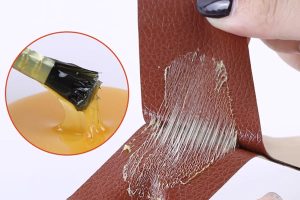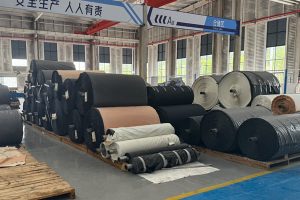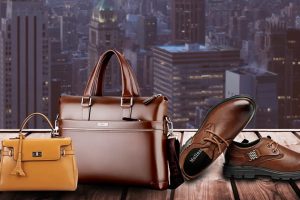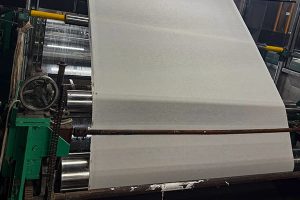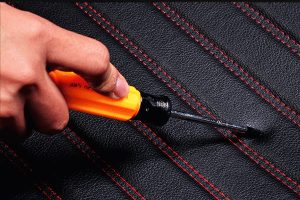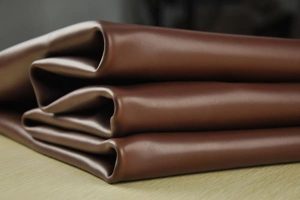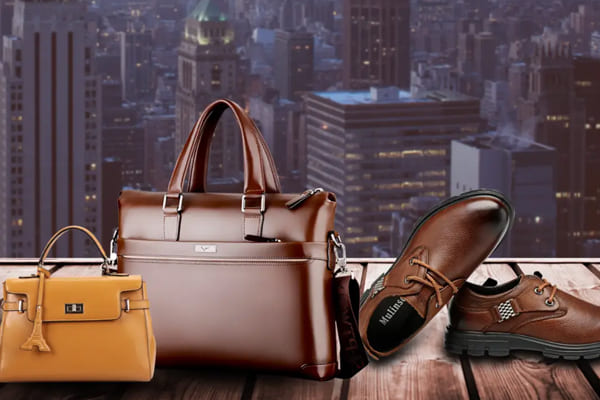
Leather fabric: It’s more than just cow hide and luxury handbags—it’s a material with enough history, versatility, and personality to deserve its own fan club. Whether you’re eyeing a rugged leather jacket or a sleek leather sofa, leather fabric has been elevating our wardrobes and homes for centuries. But how exactly does animal hide become the star of both haute couture and your favorite armchair? Spoiler alert: it involves more than just giving cows a haircut. In this article, we’ll peel back the layers—pun intended—on what makes leather so unique, from its ancient roots to the chicest fashion runways, and how it continues to reign as a timeless choice in design. Buckle up—it’s going to be a smooth (or textured, depending on your preference) ride!
Leather Fabric 101: Understanding the Basics
Leather fabric is a material made from the hide or skin of animals, primarily cows, though other animals such as goats, sheep, and even exotic animals like alligators can also be used. Known for its durability, flexibility, and luxurious feel, leather has been a popular material for thousands of years. The process of turning raw animal hides into leather fabric involves tanning, which preserves the skin and transforms it into a material that is resistant to decay. Leather fabric comes in a variety of finishes, textures, and thicknesses, making it a versatile material used in everything from fashion and accessories to furniture and automotive upholstery. It’s prized for its unique ability to age beautifully, developing a patina that adds character over time.
From Hides to Fashion: The Journey of Leather Fabric
The transformation of raw animal hides into polished leather fabric is a fascinating journey that combines craftsmanship and modern technology. After the hides are harvested, they go through a tanning process, which can be done using traditional vegetable-based methods or more common chemical treatments like chrome tanning. This process stabilizes the material, preventing it from rotting and giving it the durability for which leather is known. Once tanned, the hides are dyed and finished according to the desired look, whether that be a glossy, smooth finish for high-end fashion pieces or a rugged, distressed appearance for more casual applications. From luxury handbags and jackets to everyday shoes and furniture, leather fabric finds its way into all aspects of our lives, offering a blend of timeless style and functionality.
Natural vs. Synthetic: A Breakdown of Leather Fabric Types
Leather fabric comes in two main categories: natural and synthetic. Natural leather is made from animal hides, with full-grain leather being the highest quality, as it retains the original grain and strength of the hide. Top-grain and split leather are also natural but undergo more processing to smooth the surface or use the lower layers of the hide. On the other hand, synthetic leather, such as PU (polyurethane) and microfiber leather, is man-made and designed to mimic the look and feel of genuine leather without using animal products. Synthetic leather is often more affordable, easier to maintain, and resistant to stains, but it doesn’t develop the same rich patina over time as natural leather. Choosing between natural and synthetic leather often comes down to personal preference, budget, and the intended use of the fabric.
The Anatomy of Leather Fabric: What Makes It Unique?
Leather fabric stands out from other textiles due to its complex structure and unique characteristics. At its core, leather is made up of tightly interwoven fibers that give it its strength, flexibility, and durability. The top layer, known as the grain, is what gives leather its distinctive texture, with full-grain leather retaining all of the natural markings and imperfections of the hide. Beneath the grain lies the corium, a dense layer that contributes to leather’s stretch and resilience. Unlike synthetic materials, which are uniform in composition, natural leather breathes, absorbs oils, and develops a rich patina over time, making it more beautiful and comfortable with age. These qualities are what set leather apart, giving it a luxurious feel that improves the more it’s used.
How Leather Fabric Is Made: From Raw Material to Finished Product
The process of turning raw animal hides into finished leather fabric is a meticulous one, blending traditional craftsmanship with modern techniques. First, the hides are cleaned and soaked to remove any remaining hair, fat, or flesh. They are then subjected to the tanning process, which can be done through vegetable tanning or chemical methods like chrome tanning. Tanning stabilizes the collagen fibers in the hide, preventing decomposition and giving the leather its strength and flexibility. Once tanned, the leather is dyed to achieve the desired color and treated with various finishes to enhance its texture, gloss, or water resistance. Finally, the leather is cut, shaped, and sometimes embossed or polished, depending on its end use. This journey from raw hide to polished fabric is what gives leather its versatility, making it suitable for everything from high-fashion accessories to rugged outdoor gear.
Why Leather Fabric Is a Timeless Choice in Fashion and Design
Leather fabric has been a staple in fashion and design for centuries, and for good reason. Its timeless appeal lies in its combination of durability, comfort, and luxury. Unlike many synthetic fabrics, leather only gets better with time, developing a patina that tells a story of wear and use. Its versatility makes it suitable for countless applications, from jackets and shoes to handbags and furniture. In fashion, leather is synonymous with sophistication and edge, offering designers a material that can be both tough and elegant. In interior design, leather adds warmth and texture, creating a sense of timeless luxury. The combination of function and form is what makes leather a go-to material for designers and consumers alike, ensuring its place in wardrobes and homes for generations to come.
conclusion
In a world where trends come and go, leather fabric stands as a true testament to durability, versatility, and timeless appeal. Whether you’re crafting a vintage-inspired jacket, designing a luxurious piece of furniture, or simply appreciating the patina that comes with age, leather continues to impress across fashion, design, and functionality. From its raw beginnings to the polished products we know and love, leather’s journey is one of craftsmanship and innovation. So next time you run your hand over a leather chair or zip up your favorite jacket, remember—you’re not just wearing or sitting on fabric, you’re experiencing centuries of style and history wrapped up in one classic material.


